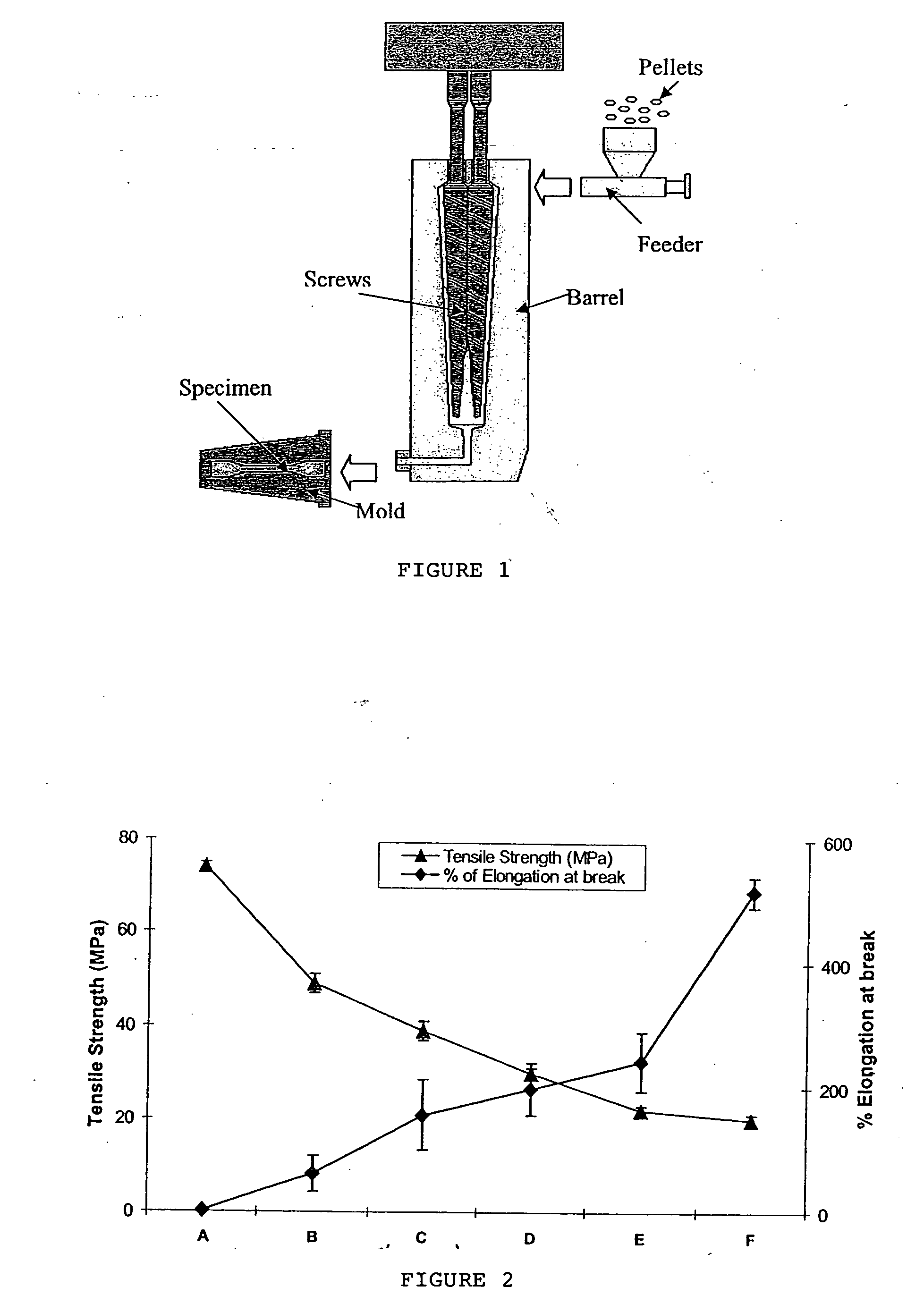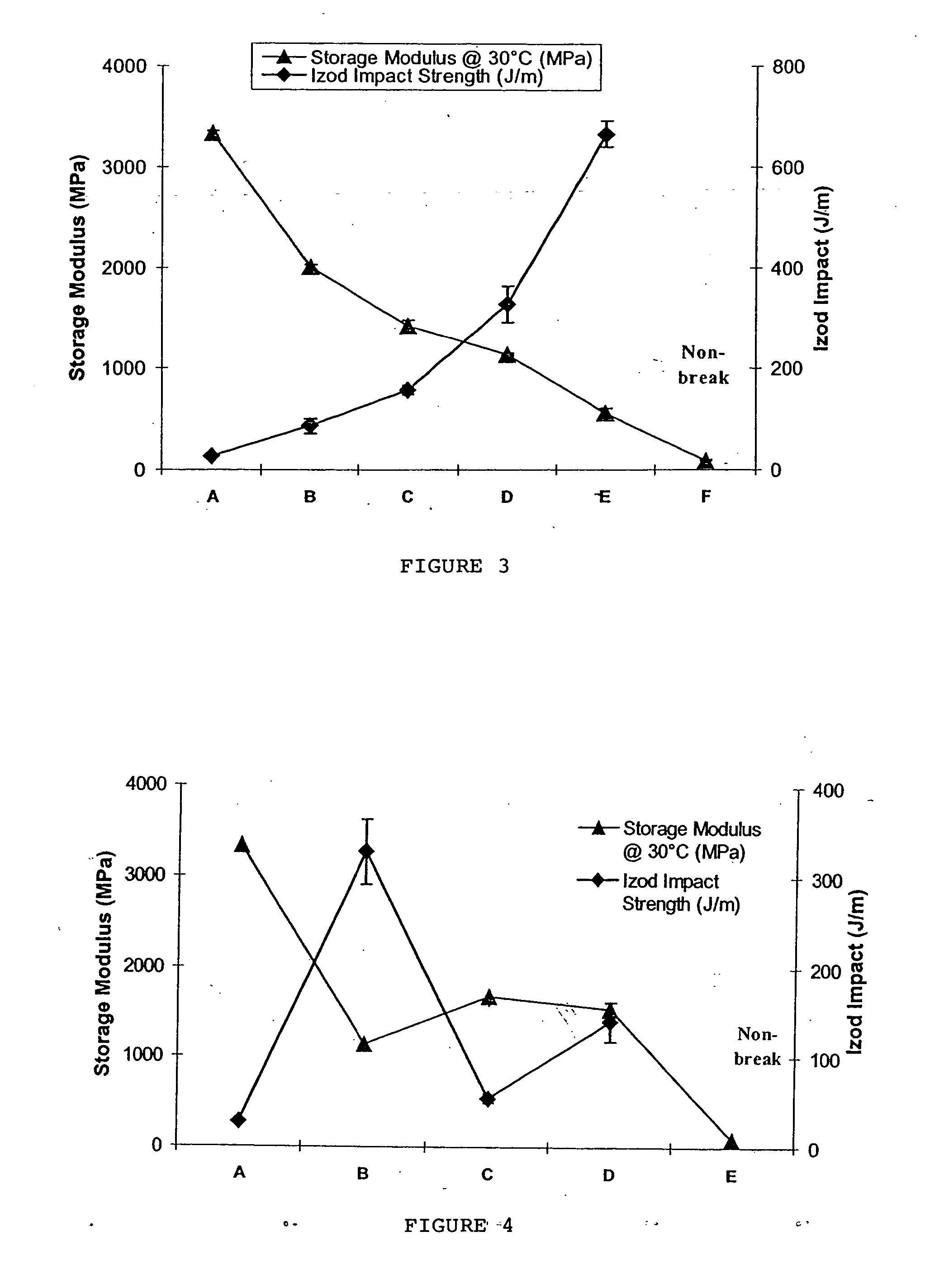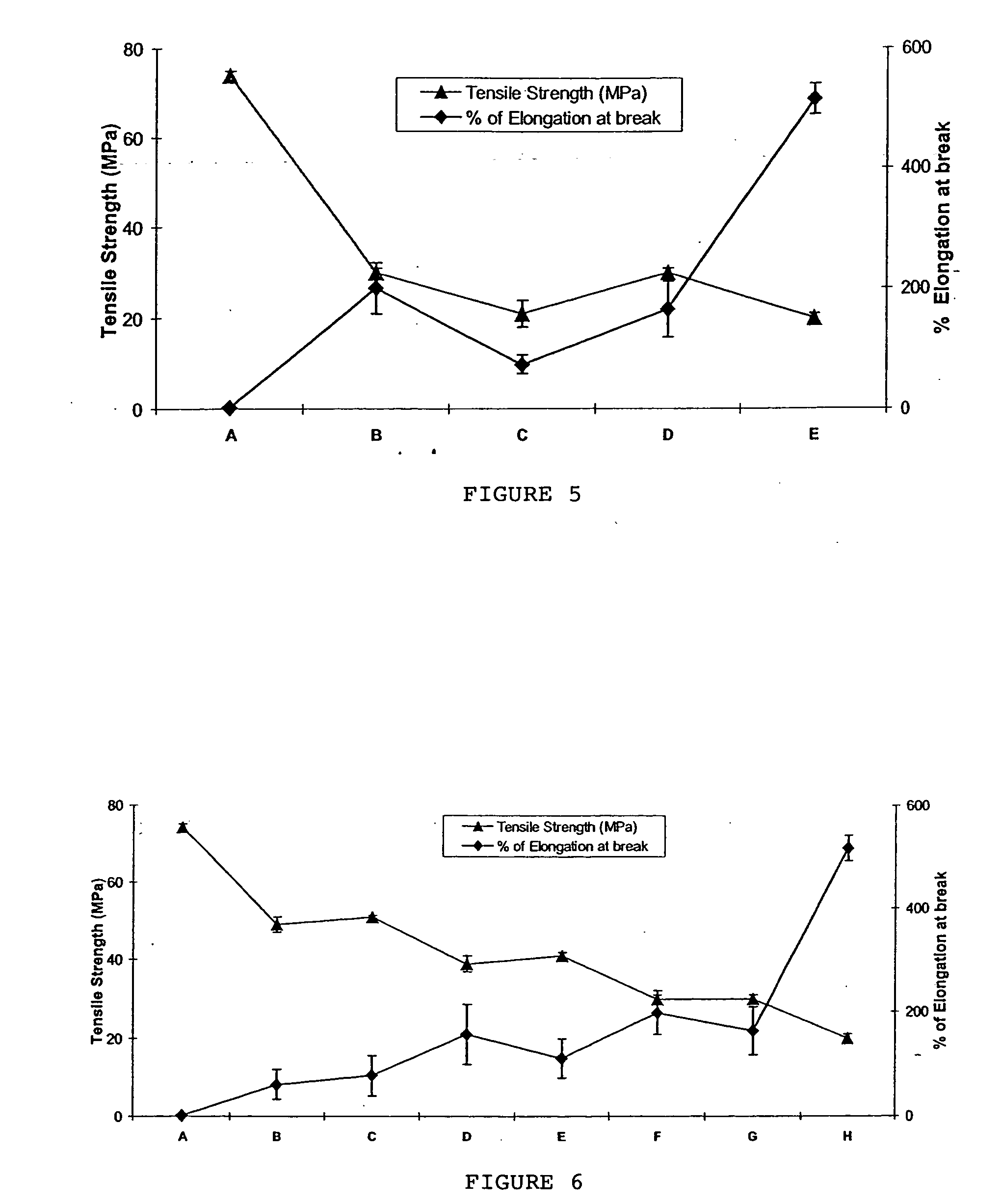Biodegradable polymeric nanocomposite compositions particularly for packaging
- Summary
- Abstract
- Description
- Claims
- Application Information
AI Technical Summary
Problems solved by technology
Method used
Image
Examples
Embodiment Construction
[0041] The polymer / clay composites in this invention have diverse uses due to their improved barrier properties and enhanced physico / thermo-mechanical properties. The objectives of this invention are: (i) to blend PHB or PLLA with PBAT (ii) to create a material with balanced stiffness / toughness (iii) to incorporate specific clay into the optimum blend composition so as to create nanocomposites, and (iv) to fabricate nanocomposites for packaging applications.
[0042] This invention uses specific surface-modified clays as the nanoclay reinforcement to be compatible with the blend matrix to the optimum extent. All the above factors synergistically combine to create a flexible-strong material with high / good barrier and improved thermo-mechanical properties.
1. Details of Invention
[0043] Materials
TABLE 1Information on materials usedMaterialNameTradenameSupplierPoly-L-lactide acidPLLABiomer ® L9000Biomer, GermanyPolyhydroxybutyratePHBBiomer ® P-226Biomer, GermanyPoly-(butylenes adipate...
PUM
| Property | Measurement | Unit |
|---|---|---|
| Fraction | aaaaa | aaaaa |
| Fraction | aaaaa | aaaaa |
| Fraction | aaaaa | aaaaa |
Abstract
Description
Claims
Application Information
 Login to View More
Login to View More - R&D
- Intellectual Property
- Life Sciences
- Materials
- Tech Scout
- Unparalleled Data Quality
- Higher Quality Content
- 60% Fewer Hallucinations
Browse by: Latest US Patents, China's latest patents, Technical Efficacy Thesaurus, Application Domain, Technology Topic, Popular Technical Reports.
© 2025 PatSnap. All rights reserved.Legal|Privacy policy|Modern Slavery Act Transparency Statement|Sitemap|About US| Contact US: help@patsnap.com



